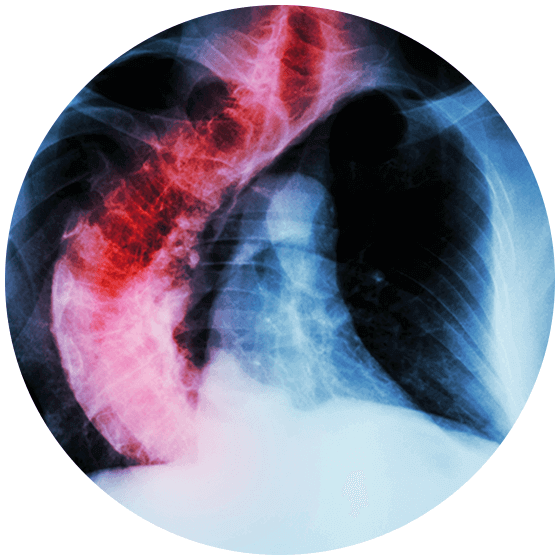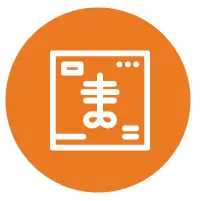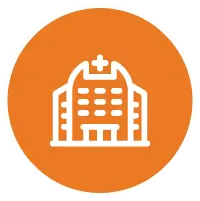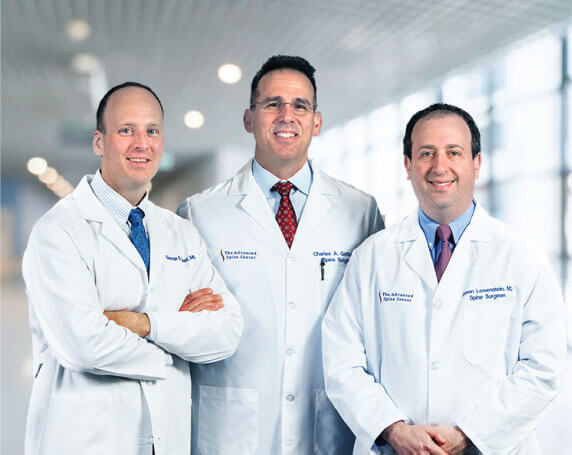Spinal Deformity Treatment in New Jersey & New York
Restore your spine and reduce pain with personalized treatment plans from our experienced spinal deformity specialists.

What Are Spinal Deformities?
Spinal deformities are conditions where the spine develops an abnormal curve or shape, deviating from its natural alignment. A healthy spine appears straight when viewed from the front and has a gentle S-curve when viewed from the side. When genetics, injury, disease, or developmental issues disrupt normal spinal growth, deformities can occur. The causes and effects of this abnormal curvature can differ in source, direction, and severity.
Whatever the cause of your spinal deformity may be, our physicians at The Advanced Spine Center are here to help you address it. Dr. Jason E. Lowenstein specializes in the diagnosis and treatment of spinal deformities, and has been recognized as a Top Doctor for scoliosis correction. Contact The Advanced Spine Center today to set up an appointment with our team of award-winning doctors.
Common Spinal Deformity Conditions
The most common of these include:
- Scoliosis: The most common spinal deformity, characterized by a sideways C or S-shaped curvature of the spine. Often developing during adolescence, scoliosis can cause uneven shoulders, protruding shoulder blades, and uneven hips. Early detection is crucial for effective treatment.
- Kyphosis: Kyphosis is a spinal deformity characterized by an exaggerated backward curve of the thoracic spine (upper back). Sometimes referred to as “Dowager’s hump” or “hunchback,” this condition often develops as a result of osteoarthritis or osteoporosis. Older adults, especially females, are particularly at risk for developing this type of spinal deformity.
- Lordosis: Lordosis, also called “sway back,” is an exaggerated forward curve of the lumbar spine (lower back). This condition results in the appearance of the abdomen jutting forward, and the buttocks jutting outward. Obesity, excessive kyphosis, or spondylolisthesis can all trigger lordosis.
- Flatback Syndrome: Flatback is a condition in which the natural curve of the lower back diminishes. This leads to a straight, or flat lower back that causes a ripple effect in the upper spine. Individuals may appear hunched over. Or, tightness can occur in the hamstrings as the spine compensates for the lack of lower back curvature.
Less common, but nonetheless significant, forms of spinal deformity also include:
- Scheuermann’s Disease: This condition appears in children and adolescents. Like kyphosis, this disease causes an exaggerated hump in the thoracic spine. Rather than resulting from degeneration, however, disruptions in the growth of spinal vertebrae cause this disease. This condition can lead to considerable pain and disability.
- Postsurgical Deformity: Spinal surgery can also result in a variety of deformities. Usually, postsurgical deformities occur when a spinal fusion procedure was unsuccessful in fully fusing the targeted bones or if the spine did not heal properly following surgery. Surgical failure can result in further curving of the spine with concurrent pain and stiffness at the surgical site.
Concerned about spinal deformity symptoms? Schedule a consultation with our globally ranked New Jersey and New York spine deformity specialists today.
Spinal Deformity Treatment Options
Treatment for spinal deformities varies based on your condition type, curve severity, age, and overall health. Our New Jersey and New York specialists create personalized plans ranging from physical therapy to advanced surgical correction, focusing on pain relief and improved quality of life.
Most often used for conditions such as scoliosis and kyphosis, your physician will use rods, plates, and screws to mechanically join one or more vertebrae and to straighten any collapsed spinal structures. This process will straighten the curves associated with scoliosis.
Decompression Procedures
Decompression surgery involves making space within a spine that has collapsed from spinal deformity. During this procedure, your physician will use a variety of methods, such as laminectomy or foraminotomy, to remove structures that are compressing the spine.
An osteotomy involves the removal of bone structures. This can entail the removal of an entire vertebra or just a section of one, in order to correct the angle at which bones sit together. This procedure is commonly used to treat scoliosis or flatback.
Physical Therapy
A physical therapist can guide individuals in strength-building exercises and loosening stretches. For some, posture lessons may be needed to learn how to properly sit, stand, or walk. Deep tissue massage is another beneficial therapy that can complement physical therapy.
Spinal Deformity Symptoms and Signs
Spinal deformity symptoms vary depending on the type and severity of your condition. While some patients experience no symptoms initially, others may notice both physical and emotional effects.
Common Physical Symptoms Include:
- Visible changes in spine alignment or posture
- Uneven shoulders or hips
- One shoulder blade protruding more than the other
- Back pain or stiffness (especially with arthritis or inflammation)
- Reduced range of motion
Unlike other spine conditions, spinal deformities are often visible to others, making early detection possible.
Spinal deformities can significantly affect self-confidence and quality of life, particularly in teenagers and young adults. Our compassionate New Jersey spine specialists understand these challenges and provide comprehensive support throughout your treatment journey.
Don’t wait for spine deformity symptoms to worsen. Early intervention can prevent progression and improve outcomes. Contact our New Jersey and New York spine specialists for a comprehensive evaluation and personalized treatment plan.
What Our Patients Are Saying
Dr. Lowenstein and team are true professionals. Extremely well versed in overall spine care knowledge. Great experience, never rushed during office visits. He was trained by the best team of doctors at Columbia Presbyterian Scoliosis and Spine in NY of whom I had personal surgery from 25 years ago. I highly recommend this team. You will not be disappointed with their overall care, compassion and direction for your needs.
-Anthony F. ⭐️⭐️⭐️⭐️⭐️
I had Dr Lowenstein and he was absolutely great. I like the most about him that he’s very straight doctor and he’ll tell you what’s wrong with you and what needs to be done. He did a spinal surgery for me and took a tumor that was pressuring my spinal cord. I was carried to his office since I could not walk already, numbness of my body was getting worse and now after two weeks after my surgery I am walking again!
-Lolita D. ⭐️⭐️⭐️⭐️⭐️
Well the free reading of my MRI is what brought me to the office. […] I felt at ease and confident with Dr. Lowenstein. Scheduled a surgery with him and after a few weeks I was feeling great. Did the therapy afterwards and all is well and I hope it stays that way. All in all I had a very positive experience with their office and staff. So glad I set out to get a second opinion because I was not getting any relief from my previous doctor after months of seeing him.
-Travis T. ⭐️⭐️⭐️⭐️⭐️
How Are Spinal Deformities Diagnosed?
Diagnosing spinal deformities requires a comprehensive evaluation that combines physical examination with advanced imaging such as X-rays, MRIs, and CT scans to help gather additional information. Our New Jersey and New York spine specialists begin with a thorough visual assessment of your spinal alignment, posture, and range of motion during your initial consultation.
This comprehensive imaging approach allows us to determine the exact location and severity of your deformity, identify any nerve or spinal cord compression, and develop the most effective treatment plan for your specific situation. We also use these images to monitor progression over time.
Why Choose Us for Advanced Spine Care
The Advanced Spine Center in New Jersey & New York is recognized as a leading destination for spine treatment in the nation. Patients choose us for their spine treatment because we offer:

Comprehensive Care
From initial evaluation to post-surgical care, we provide complete spine care. Our multidisciplinary team ensures optimal outcomes for every patient.

Advanced Technology
State-of-the-art imaging, surgical navigation systems, and minimally invasive instruments enable precise, safe spine care with excellent results.

Convenient Location
Easily accessible in New Jersey and New York , our modern facility provides comfortable care in a convenient location. Plus, patients from across the nation, and even world wide, find come to us!
Frequently Asked Questions About Spinal Deformities
Spinal deformities can develop from various causes including genetics, growth abnormalities during childhood, degenerative changes with aging, trauma or injury, infections, tumors, or neuromuscular conditions. Some deformities are congenital (present at birth), while others develop over time due to poor posture, osteoporosis, or previous spinal surgery complications.
Yes, many spinal deformities can be managed without surgery, especially when caught early. Non-surgical treatments include physical therapy, bracing (particularly effective in growing children), posture training, pain management, and activity modification. However, more severe spine deformities may require surgical correction to prevent progression and improve quality of life.
Spinal deformities can appear at any age. Scoliosis most commonly develops during adolescent growth spurts (ages 10-15), while degenerative conditions like kyphosis typically affect adults over 50. Some deformities are present at birth (congenital), while others may develop following trauma or illness at any age.
Untreated spinal deformities can worsen over time, leading to increased pain, reduced mobility, breathing difficulties, and cosmetic concerns. Severe cases may cause nerve compression, resulting in numbness, weakness, or loss of function. In extreme cases, untreated deformities can affect heart and lung function, significantly impacting quality of life and overall health.
Ready to Take the Next Step in Your Spine Care?
Don’t let spine pain limit your life. Contact the leading spinal deformity specialists in NJ & NY today!
